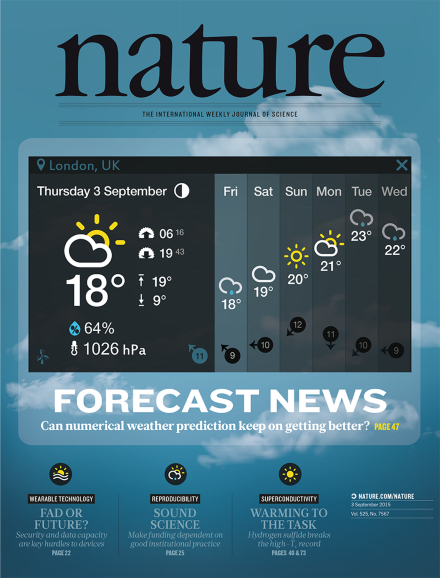Volume 525 Issue 7567, 3 September 2015
Editorial
World View
Research Highlights
Social Selection
Seven Days
News
Correction
News Feature
Comment
Books & Arts
Correspondence
News & Views
Review Article
Article
Letter
Corrigendum
Toolbox
-
Motion studies: See how they run
Collection:

